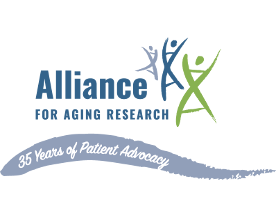LATEST RESEARCH
MORE RESEARCH
The Historical Impact of Price Controls on the Biopharma Industry
With US congressional proposals now advocating in favor of government price setting for prescription medicines, the impacts of historical price setting in Europe provides a robust data source to test and predict the impact of price controls in the US on the biopharma ecosystem.
• This study uses statistical and economic modeling to calculate the net impact of EU price controls upon the domestic biopharma ecosystem in Europe; US and EU prices were compared for the top 10 selling drugs in the US for each year from 2003 – 2020*, and impacts upon biopharma R&D ecosystem key performance indicators (KPIs) were measured.
• Our research shows that every 10% drop in the price of medicines in price-controlled EU markets was associated with a:
-> 14% decrease in total VC funding (10% early stage and 17% late stage)
-> 7% decrease in biotech patents,
-> 9% decrease in biotech start-up funding relative to the US
-> an 8% increase in the delay of access to medicines.
• Our model also proved robust at predicting the trend impacts of drug pricing on Japanese biopharma KPIs, which acts as a validation of our methodology; we posit that similar drops measured by biopharma KPIs in the US would be seen over time with similar price controls.
• Drug pricing controls implemented in the US would likely have an even greater impact on biopharma KPIs given its global leadership in investment and innovation.
Who Develops Medicines? An Analysis of NIH Grants
There is a misguided perception that NIH funding, not private market investment, is largely responsible for the creation and approval of new therapies. This study tests that hypothesis by identifying patents linked to NIH grants from a single year, identifying those associated with clinical trials and approved medicines, and quantifying the public and private investments made for those investigational and approved medicines. Key findings include: 23,230 NIH grants in the year 2000 were linked – by NIH-supported patents – to 18 FDA-approved medicines by 2020. None of these medicines reached approval without significant private investment. In fact, total private investment for the 18 approved medicines exceeded NIH funding by orders of magnitude: $44.2 billion in private investment compared to $670 million in NIH funding. As industry’s share of total investment increased, so did the likelihood of approval. These findings are consistent with the substantial literature describing the complementary roles of public and private R&D funding, and the significant long-term investments shouldered by industry with no guarantee of approval – in fact just 12% of medicines in clinical development are ultimately approved by the FDA. Public policies that would seek to replace private sector investment with publicly-funded drug development or that would reduce industry’s ability to build upon publicly-funded discoveries to bring medicines to market are therefore likely to slow drug development.
New Analysis Shows International Reference Drug Pricing Would Have a Catastrophic Impact on Alzheimer’s Disease Research
The number of Americans aged 65 and older with Alzheimer´s disease (AD) is expected to more than double from 6.2 million today to 12.7 million by 2050. Currently, there are no treatments available to stop or slow the progression of the disease. At the same time, large pharmaceutical companies have already downsized investment into AD and other neurological disorders by more than 50 percent due to the associated high risk of study failure for these diseases. International reference pricing proposals (including “International Pricing Index” or “Most Favored Nation”), currently under consideration by the U.S. Congress and proposed in the previous Congress as Title I of H.R. 3, would import foreign price controls for 125 Medicare Part B and D drugs with the highest net spending based on the volume-weighted average of drug prices in Australia, Canada, France, Germany, Japan, and the United Kingdom. Previous analysis of the impact of international reference pricing estimated a 70 percent earnings reduction in 2023 for all 125 therapies that would be potentially affected by the proposed policy. The impact of international reference pricing is projected to have carryover adverse impacts on research funding for AD. Revenue generated from successful medical products is increasingly required to underwrite investment into high-risk AD clinical development programs. Implementing international reference pricing in the U.S. would sharply reduce the ability to cross-subsidize AD research, further diminishing already dwindling investments and progress in this disease area. This is the key takeaway of a new analysis by Vital Transformation in collaboration with the Alliance for Aging Research.
H.R. 3 and Reference Pricing. Total Market Impact
Numerous proposals are being considered that would use the average of pricing in other countries to control US drug prices. Proponents argue that this can be done with little impact on innovation.
Using the Lower Drug Costs Now Act (“H.R. 3”) as an example, we find that implementation of international reference pricing in the United States would:
- Reduce earnings by 62% on average for impacted companies, with one third (32%) of affected companies having reductions larger than 95% of earnings (using conservative assumptions about the impacts on prices).
- In turn, markedly reduce biopharmaceutical companies’ investments in smaller company R&D through M&A, partnerships and other arrangements.
- Reduce by 90%+ the number of medicines developed by small and emerging biotechs — 61 fewer medicines over 10 years.
- Disproportionately impact new treatments in rare diseases, oncology, and neurology.
- Create large investment ecosystem losses to smaller companies in 19 states.
- Eliminate nearly 200,000 biopharmaceutical industry jobs, and nearly 1 million jobs across the economy.






